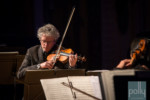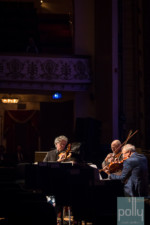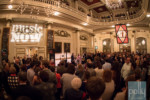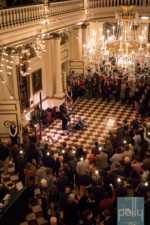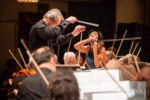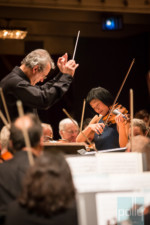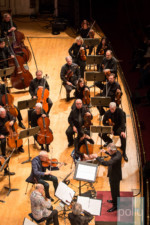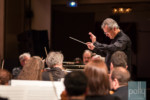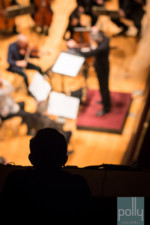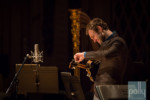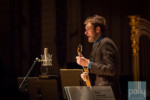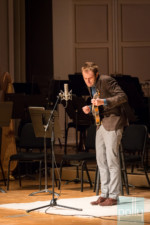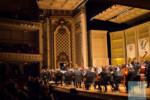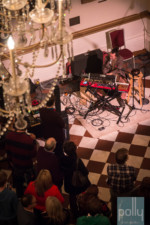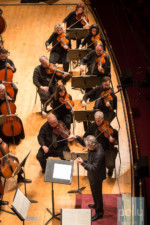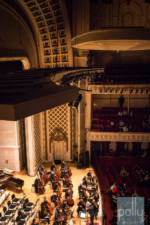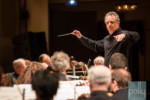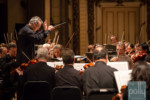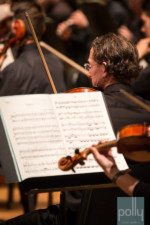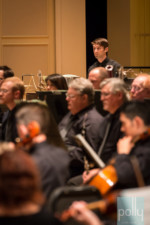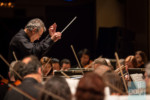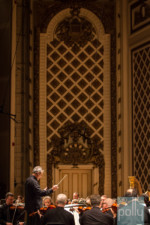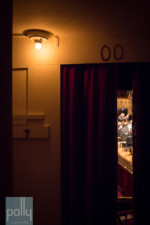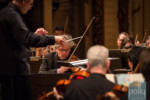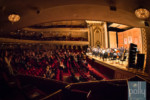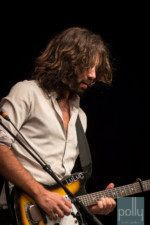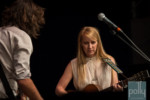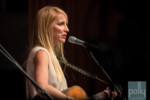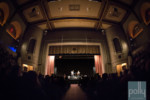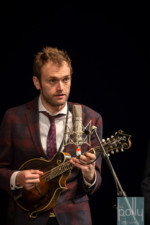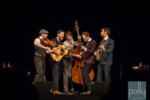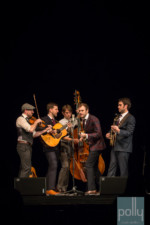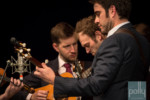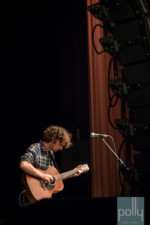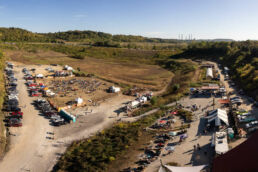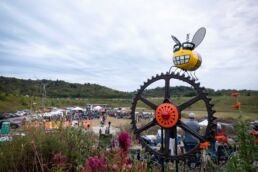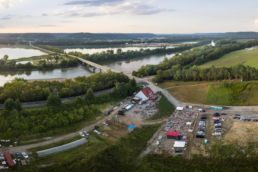Dessner’s MusicNow Keeps Doors Open
words BLAISE WELLER | photography MATT STEFFEN
Visiting Music Hall has always been a treat. The beauty of the building, the architecture in and of itself is enough to make one stop and stare in awe. Add the chance to see what Bryce Dessner, Artistic Director and creator of MusicNow is cooking up in his third year of collaborating with the Cincinnati Symphony Orchestra? I’m game even if it is during March Madness.
When it comes to classical music, I am a novice at best. I can’t tell you I understand measure or movement, or what exactly separates this piece from another. But I can tell you my experience while listening to it. I can report what comes to mind hearing a form I’m not as familiar with, or what one might learn seeing it in person, the level of enjoyment that comes from listening to another genre of music outside of what one mostly favors, even if it is understanding and experiencing it from a catechumen point of view. And I think one of the intentions, if not a central point of MusicNow, is to do just this.
In addition to encouraging experimentation and closer collaboration with musicians across the board and working with musicians outside of one’s genre, I think CSOs collaboration with Bryce Dessner is offering a doorway, attracting and encouraging audiences favoring one influence to experience another, an all inclusive experience despite one’s knowledge or understanding of this genre or that. To bring others from one fold into another.
Add to this the charm of Louis Langrée, CSO’s Music Director and Conductor, speaking to the audience before each piece, discussing what we are about to hear, welcoming everyone in a relaxed casual manner, and we have goal scored. His humor and ability to relate to everyone, elevated both our understanding of the individual works as well the overall experience. Instructing the audience what to listen for, which “bar had the shadow of Machiavelli” or the borrowed “language of Bach.” What was heavily influenced by Miles Davis. Explaining which movements have “elements of circus” or more precisely the “strip portion of the circus.” Descriptions such as “the bright sound from his trumpet” or that “somehow there was a lot of Spain in it.” Letting the audience in on what sections are “extremely difficult for the musicians to play and extremely enjoyable for an audience.”Judging from the audiences’ standing ovation after several movements, I’d say he was right on point. Regardless, it became not only interesting, but educational.
Whereas this year was more symphony driven, and not heavily focused on Indie Rock as in years past, there was another somewhat pleasant switch in focus for the final night, concentrated toward folk music. Switching venues from Music Hall to the more cozy, but equally fascinating architecture of Cincinnati’s Masonic Center, I felt also added to the overall experience, entering into an entirely different mood and environment, an even more intimate feel and closer contact to the musicians.
We continued to get insider information into the heavy connections from both Dessner as well as the The National’s imprint into MusicNow. The night opened with Luluc, a flawless harmonizing, guitar playing duo that sounded much like a mix between the Mary part of Peter, Paul, and Mary together with Leonard Cohen-esque moments who told us that they were close neighbors and became dear friends with Matt Berninger now living in Brooklyn where the rest of the band also resides. Bryce Dessner’s brother, Aaron, produced their last album, encouraging the team to live in his studio. A perfect opening for entering into this other space.
Solo musician Sam Amidon, the second performer, took the stage and the audience’s heart, varying between acoustic guitar and banjo played chest high, tucked into right shoulder, pleasantly sounding like Nick Drake one moment, then Bill Monroe only with a thirty year old voice, the next. Again, further connections can be made to The National, as Amidon met and performed with members together with pianist Doveman in New York. The Indie influence is also evident working with Valgeir Sigurosson who has produced such acts as Bjork and Bonnie “Prince” Billy.
Much to the audience’s expectation, the show ended with mandolin player, Chris Thile, and his band the Punch Brothers. Thile, winner of the MacArthur Genius Fellowship, was a familiar face for the audience prompted from Friday nights performance with the symphony, once again met with great cheer to close out the festival.
We are in the third year with Dessner as Artistic Director collaborating with the Cincinnati Symphony Orchestra and the eleventh year since his creation of MusicNow. Among its performers there have been 3 Pulitzer Prize winners and 17 Grammy winners. In the CSO program notes, Dessner explained why he was inspired to compose Réponse Lutoslawski performed by the CSO on Saturday night, insisting of composer Lutoslawski: “I like to think that his music opened a window in a certain direction for me, or pushed open a door, through which I could then pass and take my journey with the music.” I think Dessner has done the same for Cincinnati in his creation of and continuation of MusicNow, pushing open many doors for musicians and listeners alike, doors that might otherwise have remained closed or at best, only cracked.
Blaise Weller is a Writer and Professor at NKU where he teaches Creative Writing, Literature and Film. Questions? Comments? Contact him at wellerb2@nku.edu




